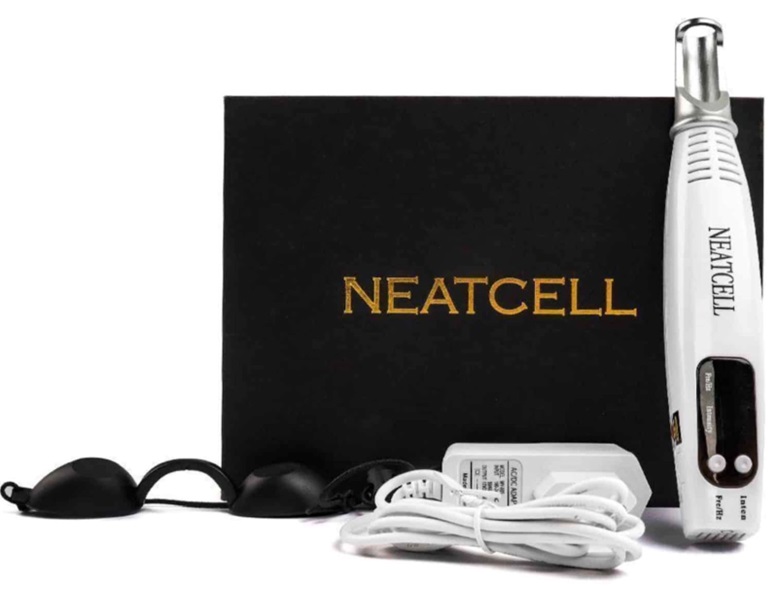Ageing and acne might seem unrelated, but they share one similarity: the visible traces they leave on the skin. Fine lines, rough texture, and scars tell the story of how skin changes over time. Treatments like ablative lasers help reduce these marks by encouraging controlled renewal and boosting collagen, allowing smoother, fresher skin to emerge.
How Ablative Laser Skin Resurfacing Works
Ablative laser skin resurfacing uses focused light energy to remove the outer layers of damaged skin while stimulating collagen production beneath the surface. This encourages the body to form new, smoother tissue over time. The method works by creating precise, microscopic zones of thermal injury that trigger natural healing.
Two main types of lasers are commonly used: carbon dioxide (CO₂) and erbium lasers. CO₂ lasers are effective for deeper wrinkles and scars, while erbium lasers are often used for more superficial concerns and faster healing. Both technologies have been studied extensively and are considered effective options when performed by trained professionals.
Recovery usually ranges from several days to two weeks, depending on the treatment intensity. During this time, the skin naturally sheds and regenerates. With appropriate aftercare, the smoother results can last for years before another session is required.
Wrinkles: Where Collagen Gets a Second Chance
Fine lines and wrinkles are some of the most common reasons people consider ablative laser skin resurfacing. As collagen and elastin production decline with age, the skin loses firmness and elasticity. The laser energy penetrates into the dermis, prompting new collagen fibres to form and strengthening the underlying structure.
Results typically develop gradually, with noticeable improvements appearing within several weeks as collagen remodelling continues. The effect is a smoother, firmer appearance that remains natural. Studies have shown that collagen regeneration can persist for months following the procedure, supporting longer-lasting outcomes.
Acne Scars: Smoothing Out the Past
Acne scars form when inflammation damages deeper layers of the skin, creating uneven texture. Fractional laser resurfacing is a preferred method for such concerns because it targets small areas of damaged tissue while leaving surrounding skin intact. This helps speed up healing and minimises risks of post-treatment complications.
Clinical evidence supports fractional technology as an effective solution for improving atrophic (indented) acne scars. The laser’s precision encourages gradual collagen repair that smooths irregularities over multiple sessions. Many patients report continued improvement for several months after completing treatment.
Pigmentation and Sun Damage: Evening Out the Canvas
Prolonged sun exposure can cause uneven pigmentation and texture. Ablative laser skin resurfacing helps by removing the damaged epidermal layers where pigment collects and stimulating new cell growth underneath. Controlled thermal energy breaks down excess melanin, allowing fresher, clearer skin to replace it.
When combined with proper sun protection, these results can remain stable. Dermatologists often recommend this approach for treating photodamage and fine lines together, as it addresses both colour irregularities and surface roughness in a single procedure.
Scars Beyond Acne: Helping Skin Heal Smoothly
Not all scars come from acne. Surgical incisions, burns, or trauma can also lead to visible marks. Fractional laser resurfacing can help by softening dense collagen bundles that form in scar tissue, improving elasticity and texture. Research shows that this treatment can reduce the thickness and stiffness of scars, allowing them to blend more evenly with surrounding skin.
Gradual improvement becomes apparent after each session, with continued remodelling over time. The technique does not erase scars entirely but can make them less noticeable and more uniform in tone.
Treating Different Skin Types with Care
Not every skin type reacts the same way to laser energy. Dermatologists assess tone, texture, and sensitivity before recommending the right type of laser treatment. Fairer complexions often tolerate deeper resurfacing, while darker tones may require gentler settings to reduce the risk of pigmentation changes.
This level of customisation ensures each session remains safe and effective. The depth and strength of the laser are adjusted according to the skin’s condition, helping achieve visible results without unnecessary irritation. The goal is precision, safety, and consistency.
When fractional laser resurfacing is used, the energy is applied in narrow beams that leave portions of the skin untouched, which helps speed up recovery. This process supports faster healing while keeping the skin barrier strong. The outcome is refreshed, balanced skin with improved tone and texture.
How to Care for Skin After Ablative Laser Treatment
Post-treatment care directly influences results. Gentle cleansing, hydration, and consistent sun protection are essential. Dermatologists usually advise avoiding exfoliants, retinoids, and hot environments for at least two weeks.
Newly resurfaced skin can feel tight or sensitive, so a mild moisturiser helps maintain comfort during healing. UV protection is vital to prevent pigment changes. With steady care, the skin continues to improve for months as collagen renewal progresses.
Why People Trust Ablative Lasers
Both fractional laser resurfacing and ablative laser skin resurfacing have strong clinical support as effective treatments for wrinkles, scars, and photodamage. They work by stimulating the body’s natural healing mechanisms to rebuild healthier tissue.
While patience is needed for recovery, these scientifically backed treatments can produce lasting improvements in texture and tone. When performed by experienced specialists, they offer predictable outcomes with manageable downtime. Contact Halley Medical Aesthetics to book a consultation and find out how ablative laser treatments can help refresh, renew, and restore your skin’s natural balance.




